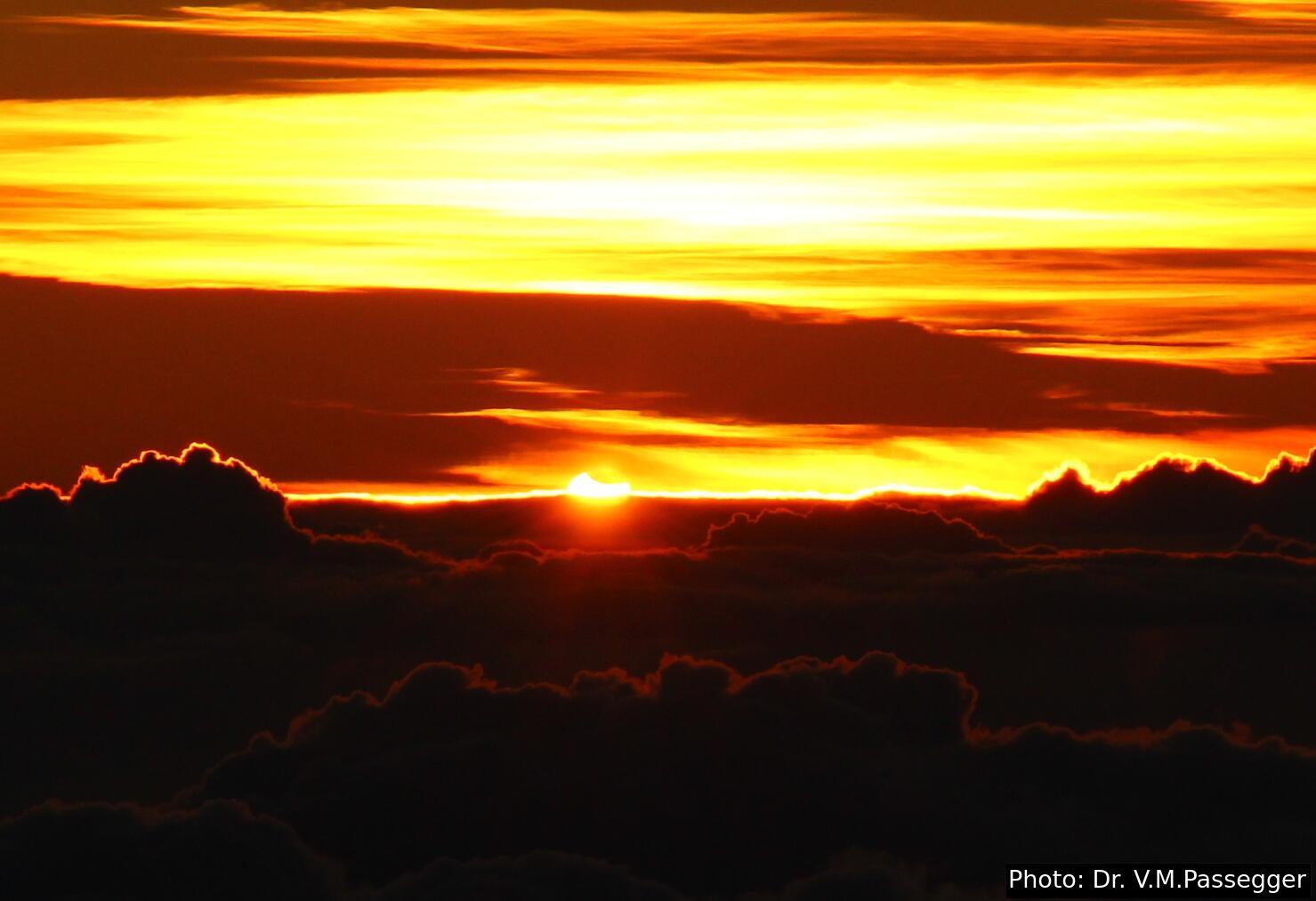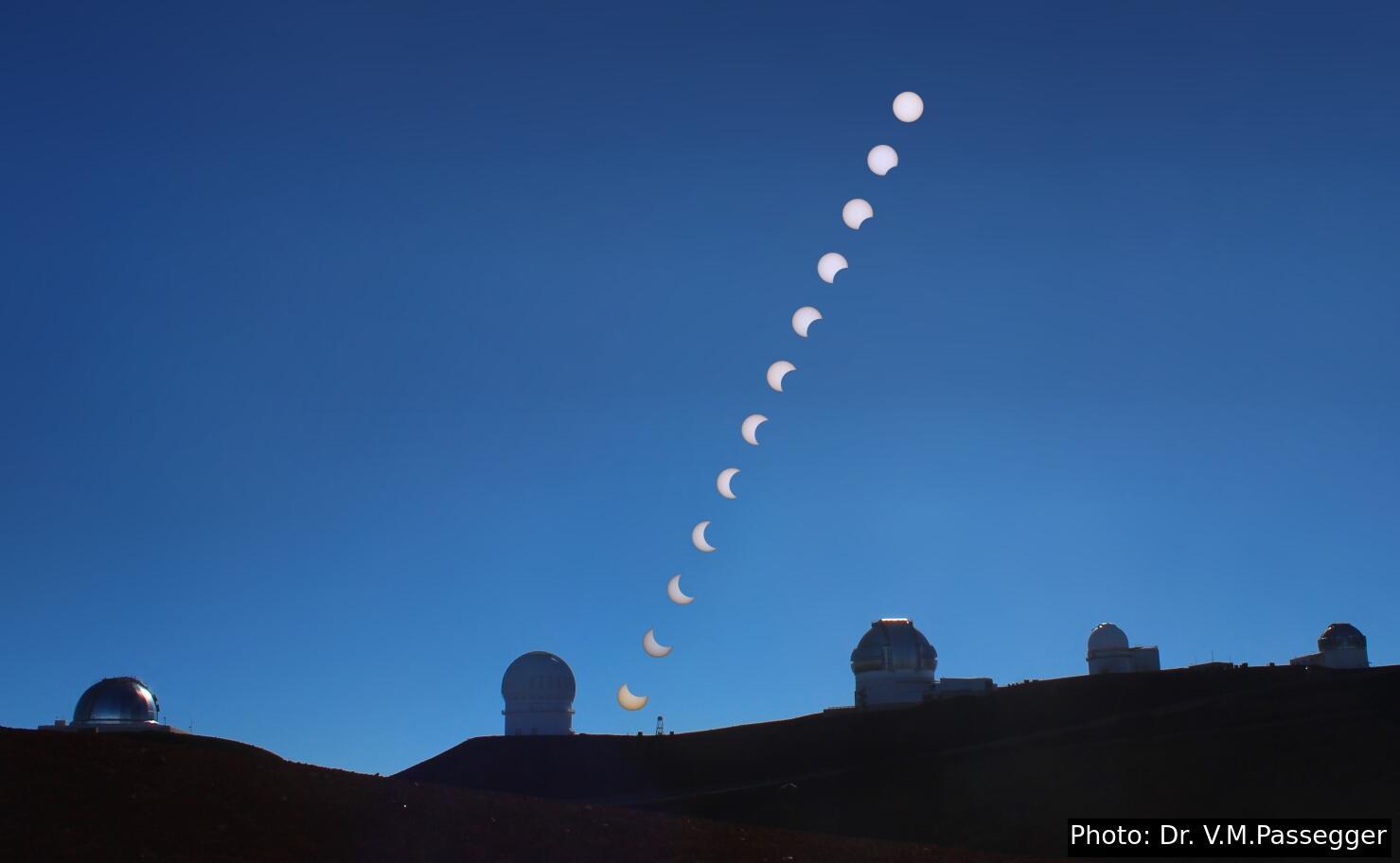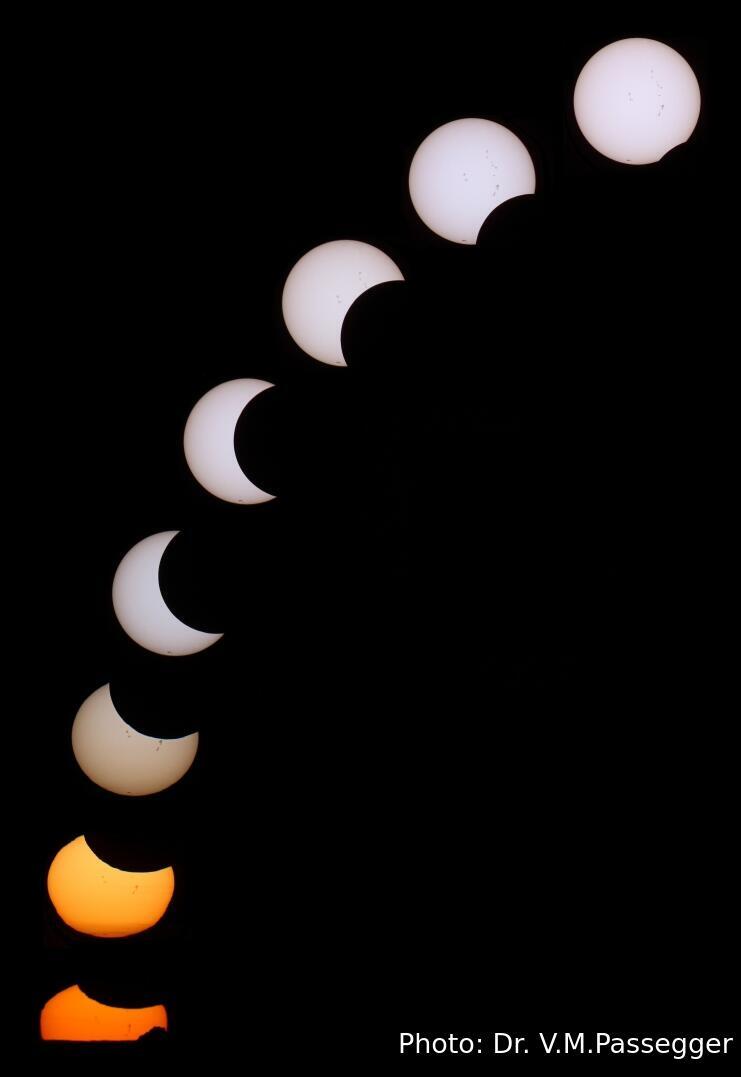On October 2, 2024, an annular solar eclipse, also called 'ring of fire', occurred in parts of the Pacific Ocean, southern Chile, and southern Argentina. The Easter Island was among the few places where the event was visible to its full extent, drawing thousands of eclipse chasers to the small island in the Pacific Ocean. Some impressive images can be found at Space.com.
Like in a total solar eclipse, the Moon passes directly between the Sun and Earth in an annular eclipse. However, because the path of the Moon around Earth is not perfectly circular but slightly elliptical, the Moon is sometimes closer to Earth and sometimes farther away. If the Moon is farther away when the eclipse happens, it is apparently 'too small' to cover the Sun completely, leaving an outer ring of the Sun's surface visible as a 'ring of fire'.
On Hawai`i, the Moon covered the Sun by a maximum of 53% on Big Island (Hawai`i Island) shortly after Sunrise in the eastern sky. Dr. Vera Maria Passegger, a support astronomer at Subaru Telescope, was at the summit area of Maunakea to photograph this event. “When rising, the Moon already covered the upper right part of the Sun. At 6:46 AM, the maximum coverage reached about 50%. During that time, the Sun's light and the surrounding landscape appeared noticeably dimmer than they usually would during a normal morning,” Dr. Passegger explains. The weather this morning was also favorable in Hilo, where only some patchy clouds blocked the view of the Sun from time to time.
The next solar eclipse visible from Hawai`i will be a partial eclipse happening on November 14, 2031, where the Sun will be covered by a maximum of 61%.

Figure 1: Rise of the partially eclipsed sun as seen near the summit of Maunakea at 6:13 AM on October 2, 2024. (Canon EOS 600D, 300mm, f/13, 1/500 s, ISO 400) (Credit: Dr. Vera Maria Passegger/NAOJ)

Figure 2: Composite image of the eclipse over Maunakea observatory as seen from Subaru telescope. Observatories from left to right: NASA Infrared Telescope Facility (IRTF), Canada France Hawaii Telescope (CFHT), Gemini North telescope, University of Hawaii 2.2-meter telescope, and United Kingdom Infrared Telescope (UKIRT). (Canon EOS 600D, 18mm, f/13, 1/250s, ISO 100) (Credit: Dr. Vera Maria Passegger/NAOJ)

Figure 3 Artistic composite image of the eclipse, taken with a 300mm zoom lens and a self-made solar filter. (Canon EOS 600D, 300mm, f/7 - f/13, 1/15 - 1/200 s, ISO 100) (Credit: Dr. Vera Maria Passegger/NAOJ)


